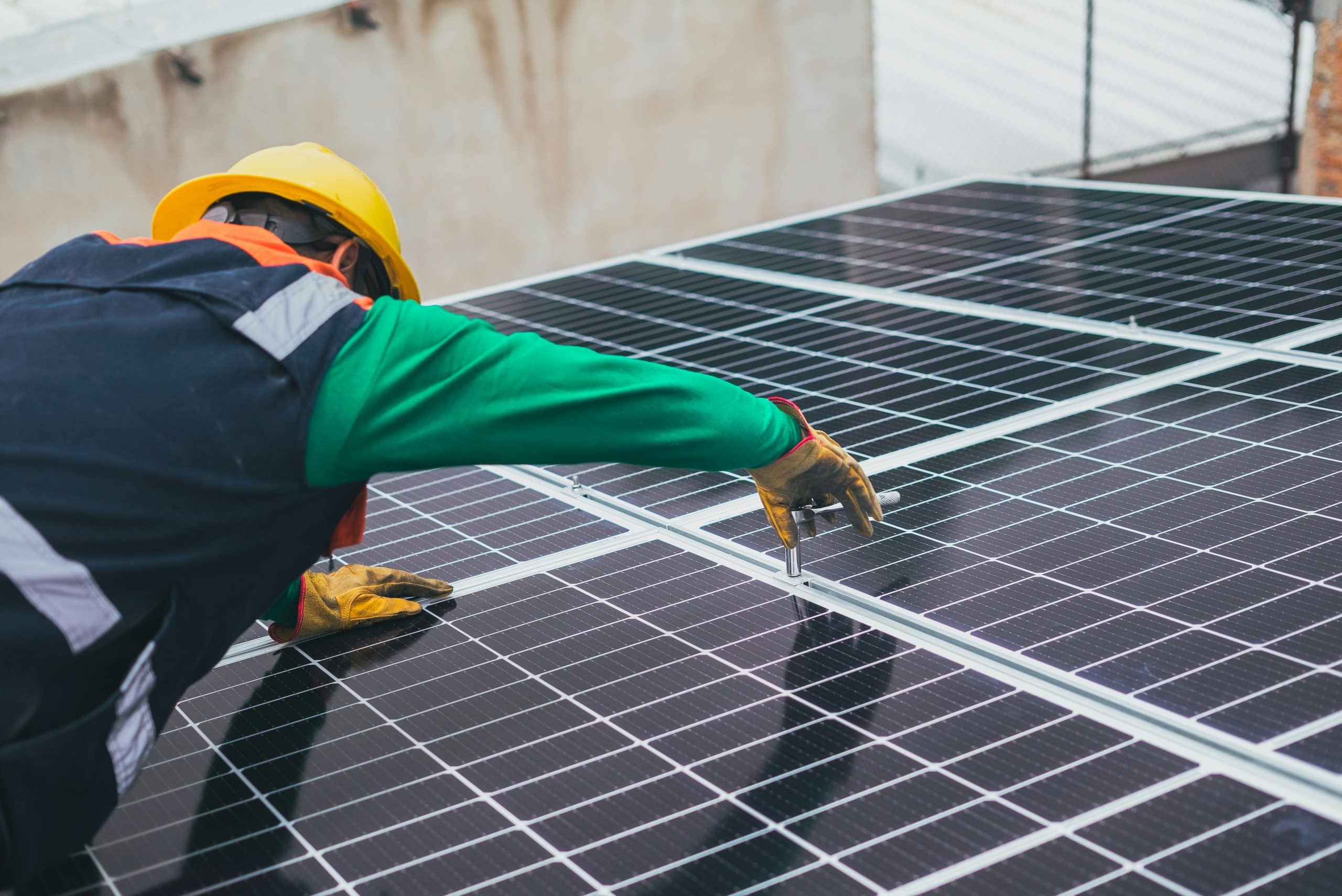What Breakthroughs Are Happening in Organic Photovoltaic Cells for Solar Energy?

In your quest to stay informed about the latest advancements in renewable energy, you’ve likely encountered discussions about organic photovoltaic cells. This cutting-edge technology is rapidly changing the landscape of solar power, bringing with it fresh hope for a cleaner, more sustainable future. But what exactly are organic photovoltaic cells? How do they function, and what makes them so unique and promising? Let’s take a closer look at these questions, and shed light on the remarkable breakthroughs happening in this sphere of solar energy.
A Deep Dive into Organic Photovoltaic Cells
Before we can truly appreciate the advancements taking place, let’s first understand what organic photovoltaic cells are. Unlike traditional solar cells, which are made from inorganic materials like silicon, organic photovoltaic cells (or OPVs) are composed of organic materials, mainly carbon-based compounds. These materials are used to create a thin, light-absorbing layer within the cell. When sunlight, or any other form of light, hits this layer, it excites the electrons, instigating a flow of electric current.
Cela peut vous intéresser : How Is Machine Vision Being Applied in Automated Quality Control Systems?
The significance of using organic materials lies in their inherent advantages. They’re typically cheaper, more flexible, and lighter than their inorganic counterparts. Despite these benefits, OPVs have historically lagged behind traditional solar cells in terms of efficiency. But thanks to recent breakthroughs in this technology, that gap is narrowing quickly.
Hurdles and Breakthroughs in Efficiency
The efficiency of a solar cell, whether it’s organic or inorganic, is essentially its ability to convert sunlight into electricity. The higher the efficiency, the more power it can generate for the same amount of light. While conventional solar cells have reached efficiencies of around 20-25%, OPVs have been stuck at a somewhat disappointing 10-15%.
A lire aussi : What’s the Impact of AI on Streamlining Legal Document Analysis?
However, this is changing. A significant breakthrough in donor material technology has resulted in a dramatic increase in the efficiency of OPVs. By tweaking the molecular structure of the organic materials used in the light-absorbing layer, scientists have been able to increase the efficiency of power conversion. This breakthrough in high-performance donor materials is being hailed as a game changer for OPVs.
The Importance of Electron Acceptors in OPVs
In any photovoltaic cell, the excitation of electrons is only the beginning of the power generation process. These excited electrons need to be carefully channeled to create a continuous flow of electricity. This is where electron acceptor materials come in.
In the context of OPVs, the choice of electron acceptor material is critical to the overall performance of the device. The acceptor must be able to efficiently extract excited electrons from the donor material, and facilitate their movement towards the electrode. Breakthroughs in the development of non-fullerene acceptors have led to significant enhancements in the operational stability and power conversion efficiency of OPVs.
Organic Tandem Cells: The Future of Solar Energy?
In your exploration of solar energy, you might have come across the concept of tandem cells. These are essentially solar cells that have multiple light-absorbing layers, each designed to capture a different part of the solar spectrum. By doing this, they maximize the absorption of light, and consequently, the generation of power.
While tandem cells have been a part of inorganic solar technology for a while, they’re relatively new in the domain of OPVs. Exciting research in this area has shown promising results, with organic tandem cells demonstrating efficiencies that rival those of conventional solar cells. These results not only highlight the potential of OPVs, but also pave the way for their widespread adoption in the future.
Towards a More Sustainable Future with OPVs
The journey of organic solar cells is a testament to the transformative power of technology. Despite their initial limitations, these cells have proven that they can stand toe-to-toe with traditional solar cells. The breakthroughs in donor materials, electron acceptors, and tandem cell technology have set OPVs on the path towards becoming a viable, cost-effective option for solar energy.
As we navigate the challenges of climate change and seek sustainable solutions, these advancements in OPVs offer a beacon of hope. They remind us that, with ingenuity and perseverance, we can harness the power of the sun in more efficient and eco-friendly ways, lighting the way towards a greener, brighter future.
The Role of Bulk Heterojunctions in OPVs
Diving deeper into the inner workings of OPVs, we come across the term bulk heterojunction (BHJ). It’s a fundamental aspect of OPVs, which plays an instrumental role in their operation. The BHJ refers to the microscopic structure of the active layer, where sunlight is converted into electricity.
An ideal active layer of an OPV cell consists of a fine mixture of electron donor and acceptor materials. When sunlight hits this layer, it excites the electrons in the donor materials. These excited electrons, also known as photoelectrons, then move towards the acceptor materials. This movement of electrons creates a flow of electricity.
The BHJ structure allows for a large interface between the donor and acceptor materials, improving the charge separation process. This key trait significantly boosts the power conversion efficiency of OPVs. However, creating a balanced BHJ structure is a challenge due to the complex interplay between various factors like morphology, donor-acceptor compatibility, and more.
Recent advances in the design and synthesis of donor and acceptor materials have enabled the construction of more efficient BHJ structures. For instance, the emergence of non-fullerene acceptors has opened up new possibilities for the design of high-performance OPVs. Moreover, the development of optimized fabrication processes has further enhanced the efficiency and stability of OPVs.
Perovskite Solar Cells: A Worthy Contender
While discussing advancements in the field of photovoltaics, it’s impossible to overlook the meteoric rise of perovskite solar cells. Perovskite materials have gained immense popularity due to their exceptional light-absorbing properties and easy fabrication process.
What makes perovskite solar cells particularly appealing is their impressive conversion efficiency. They’ve shown efficiencies exceeding 20%, rivaling conventional silicon-based solar cells. However, perovskite solar cells come with their own set of challenges, including stability issues and the use of toxic lead.
Interestingly, the paths of OPVs and perovskite solar cells have begun to converge. Researchers are now exploring the combination of these two technologies to create hybrid solar cells. These hybrid cells aim to maximize the advantages of both OPVs and perovskite solar cells, offering high efficiency and stability while maintaining low production costs.
Conclusion: The Dawn of OPVs in Renewable Energy
As we stand on the precipice of a renewable energy revolution, organic photovoltaic cells are proving to be a cornerstone in our quest for sustainability. The ongoing breakthroughs in OPV technology, from high-performance donor materials to efficient bulk heterojunctions, mark a significant step towards overcoming the efficiency gap with traditional solar cells.
The integration of OPVs in everyday objects, like solar panels on rooftops or even flexible solar skins for electronic devices, seems not too far in the future. Moreover, the potential synergy between OPVs and perovskite solar cells holds exciting prospects for the future of solar energy.
While challenges persist, the progress made in the field of organic photovoltaics is undeniable. It’s a testament to human innovation, pushing the boundaries of what’s possible. As we continue to refine this technology, we’re not just creating better solar cells; we’re building a more sustainable, eco-friendly future. And in this journey, the sun is indeed shining brightly on OPVs.
